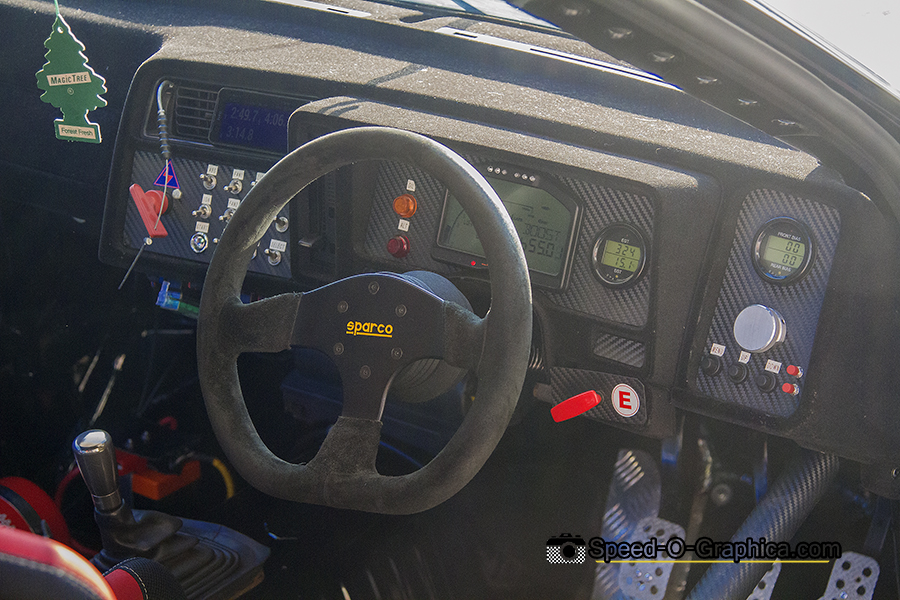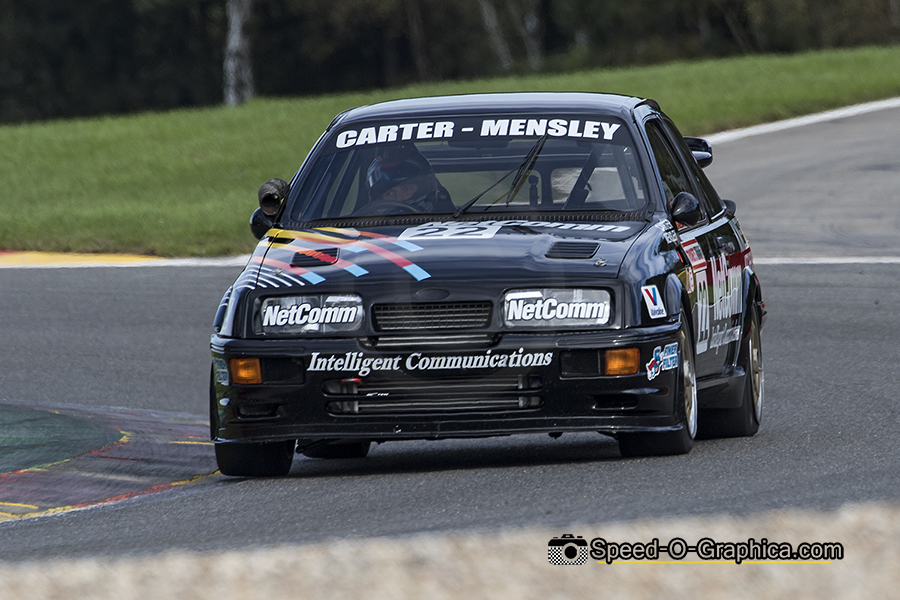Ford’s Group A Monster: RS500 Cosworth

By Marcel Hundscheid / Speed-O-Graphica
Thirty-one years after Ford conquered the world with their fire-breathing Group A monster, the RS500 Cosworth remains one of the world’s hottest hatches. In today’s story, Motorsport Retro’s European correspondent Marcel Hundscheid gives us an overview about the development of this wonderful car.
In 1982, Ford Europe replaced the Taunus TC3 (Europe) and Cortina Mk. V (UK) with the refined Sierra, a large family car designed by Uwe Bahnsen, Robert Lutz and Patrick Le Quement. Initially the car wasn’t welcomed due to its aerodynamic styling. Many conservative customers were still attached to the conservative looks of the earlier Taunus/Cortina. Besides this, the early Sierras were not available as a sedan. Five years later Ford introduced the facelifted Sierra, a car that was mainly produced in Germany (Cologne), Belgium (Genk) and the UK (Dagenham).

Ford launched a special high performance version in July 1986 as the Sierra RS Cosworth, powered by a 2.0 liter OHC bottom end equipped with a 16 valve DOHC cylinder head developed by Cosworth. The British automotive engineering company based the engine on the 4-cylinder Pinto and fitted double overhead camshafts, 4 valves per cylinder and a turbo charger. Combined with a Cosworth Garret T3 turbocharger and intercooler, the engine generated around 204 hp.
To be able to homologate the Sierra RS Cosworth for Group A racing in Europe, Ford had to build a minimum of 5000 cars. Ford’s Special Vehicle Engineering group in Belgium designed and produced this version, which was available in both right hand and left hand drive. Remarkably the Sierra RS Cosworth was only available in white, black or Ford’s Moonstone Blue.

The Group B period was an exhilarating, but dangerous period. A dramatic accident in the 1986 Rally of Portugal saw a Ford RS200 crash, leading to the death of three three spectators. When Lancia had a fatal crash during the rally of Corsica, Group B was banned and with the abrupt end of the series, Ford found a worthy replacement for the RS200 in the Sierra.

5545 cars were manufactured, of which 500 were converted in 1987 into the three-door RS500 Cosworth. Just 500 cars were built to allow it in rallying and Group A racing. This version was sold alongside the regular version of the Sierra and was equipped with a 222 hp engine.
The RS500 Cosworth competed in an evolution form in Group A Racing. Tickford Engineering Company modified the car with uprated brakes and larger brake cooling ducts. From the outside, the RS500 Cosworth could be easily recognized by the modified front and rear spoilers. The fog lamps in the front bumpers were replaced by air intakes as an extra spoiler was fitted under the large jetser that was used on the earlier RS Cosworth. Fitted with a larger intercooler and a larger turbocharger the monster version of the Sierra could reach an output of no less than 558 hp.

In Group A, Ford and BMW fought their battles in the 1987 World Touring Car Championship with respectively the Sierra RS Cosworth and the M3. The Swiss private team Eggenberger Motorsport entered the RS500 Cosworth during the seventh round at Brno as a replacement for the Sierra RS Cosworth backed by Ford Europe. Klaus Ludwig and Klaus Niedzwiedz won the debuting race for the RS500 Cosworth from the pole.
At the end of the season, Ludwig and Niedzwiedz grabbed the constructors title. Italian Roberto Ravaglia won the world drivers championship for BMW Schnitzer with just a single point over Ludwig and Niedzwiedz. As the FIA decided to cancel the WTCC after just one year, Ford moved their focus to the DTM and European Touring Car Championship.

In the 1988 DTM championship, Ford entered the RS500 Cosworth powered by the 2 liter turbo engine, as both BMW and Mercedes used 2.3 liter engines without the turbo charger. To curb the performance of the ever-winning RS500 Cosworth, Ford was obliged to apply a 43.5 mm air restrictor. Despite increasing the Sierras minimum weight to 1500 kg and allowing BMW and Mercedes to develop their engines, the RS500 Cosworth kept winning races and Klaus Ludwig conquered the 1988 DTM championship.
Attempts to further curtail the Cosworth’s performance, even with the use of a 38mm air restrictor, were unsuccessful. 1989 was the final year of the DTM championship that allowed turbocharged engines. Klaus Niedzwiedz narrowly missed the championship because the RS500 was imposed an even higher minimum weight despite four victories.

In the Australian Touring Car Championship from 1988 the RS500, Cosworth dominated from the first race. In the end the car won all nine races that year. Dick Johnson won six races followed by John Bowe with two wins, all with the mighty RS500 Cosworth.
In that same year the RS500 Cosworth dominated the British Touring Car Championship with Andy Rouse. Although Rouse won nine of the twelve championship races he failed to claim the championship title. Frank Sytner won the driver title in a BMW M3, Rouse finished third. It took until 1990 for the RS500 to make its mark on the BTCC as Robb Gravett won the title scoring nine victories.

After turbo engines were banned from the DTM championship, Ford decided to step out. After winning countless national and international rally championships, and several titles in amongst others the World Touring Car Championship, European Touring Car Championhip, Australian Touring Car Championship, British Touring Car Championship and the DTM Ford’s racing program with the RS500 Cosworth was discontinued.

